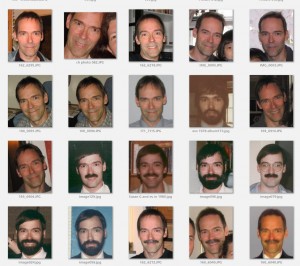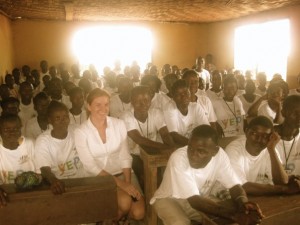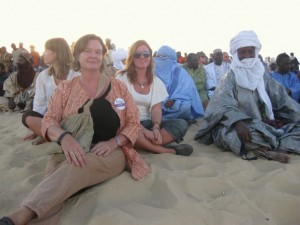Miscellaneous
It's been a wonderful weekend. No theme to it. Just a steady stream of good experiences.
The technological surprise was the Picasa's new face-matching feature. This will blow your mind, it is so good. The newest release of Picasa (I've extolled the virtues of Picasa before) produces thumbnails of most every face in your photo collection. For me, this meant that Picasa came up with more than 6,000 faces. They needn't be portraits, either. Picasa will find most any face in your collection, even group shots, and give you one or more cropped portraits from that photo.
Then comes more magic. You give Picasa a name for one of those instant portraits and Picasa will go gather all the other photos you have of that person in your collection.  I labeled a few photos each of my daughters JuJu and Charlotte, and Picasa went to work, gathering almost 2,000 photos of each, getting it 99% correct. Quite often Picasa will place a "?" on the photos it gathers, meaning it is not certain it is the same person, but it was almost always correct. It picked out photos of JuJu from age 2 to 11. It picked her out even if she was standing in the shade, even if she had a unusual haircut or a hat, even if her eyes were closed, and even if her head was turned or she was looking down. The face-matching feature even did well in distinguishing between two 11-year old identical twins, who I sometimes struggle to keep straight. I'm using Picasa version 3.6.0 for Windows (a free program, BTW). It seems like magic. Maybe it's one of those military technologies trickling down. Whatever it is, I'm in awe. If you have a big collection and you don't want to take the time to label photos of your friends or family, this is something you should consider.
What else happened this weekend? Here's something. There's a new exhibit on Race at the Missouri History Museum: Race: Are We So Different? The answer, of course, is no.
[more . . . ]
I labeled a few photos each of my daughters JuJu and Charlotte, and Picasa went to work, gathering almost 2,000 photos of each, getting it 99% correct. Quite often Picasa will place a "?" on the photos it gathers, meaning it is not certain it is the same person, but it was almost always correct. It picked out photos of JuJu from age 2 to 11. It picked her out even if she was standing in the shade, even if she had a unusual haircut or a hat, even if her eyes were closed, and even if her head was turned or she was looking down. The face-matching feature even did well in distinguishing between two 11-year old identical twins, who I sometimes struggle to keep straight. I'm using Picasa version 3.6.0 for Windows (a free program, BTW). It seems like magic. Maybe it's one of those military technologies trickling down. Whatever it is, I'm in awe. If you have a big collection and you don't want to take the time to label photos of your friends or family, this is something you should consider.
What else happened this weekend? Here's something. There's a new exhibit on Race at the Missouri History Museum: Race: Are We So Different? The answer, of course, is no.
[more . . . ]


